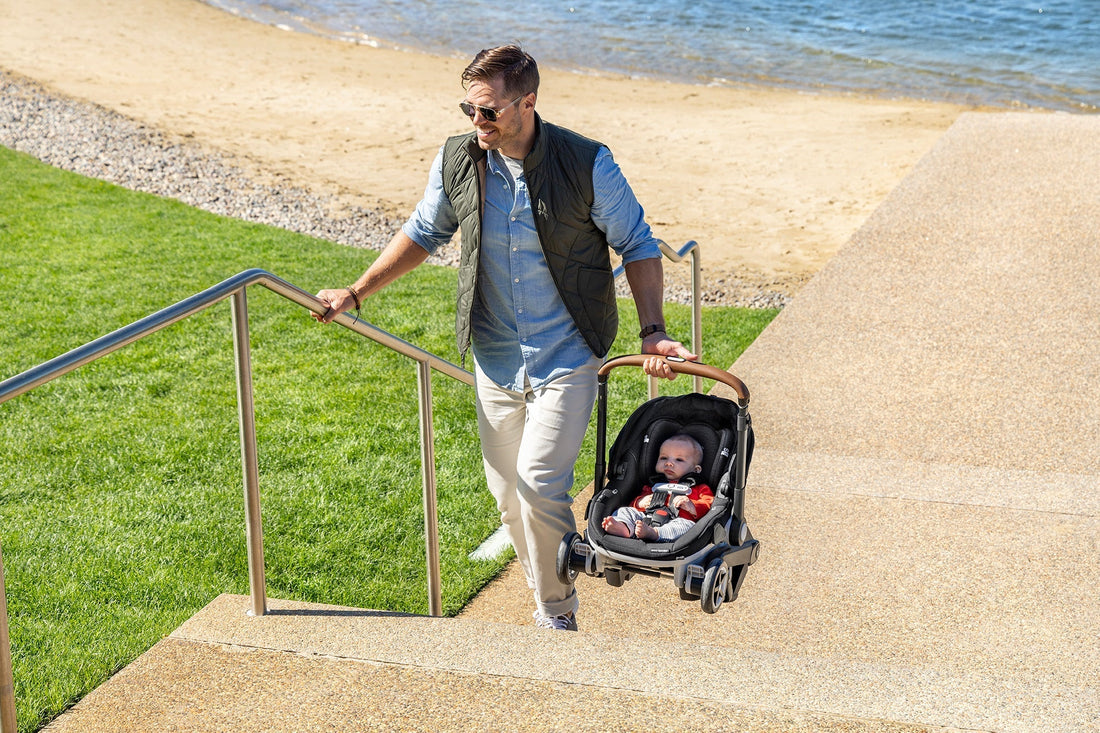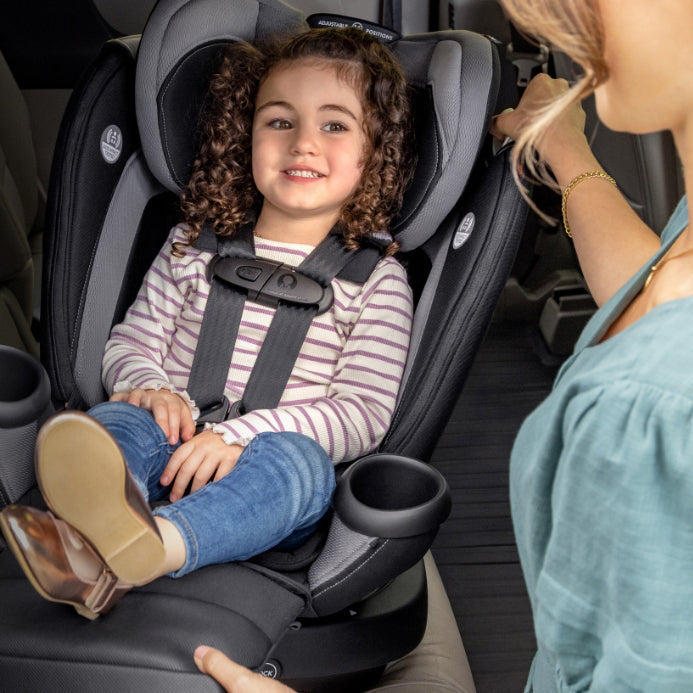
3 Tips for Airplane Travel with Car Seats and Strollers
Be Prepared to Travel with Kids on an Airplane
Traveling somewhere new or returning somewhere you love is an exciting experience. You can experience new destinations with your children and create memories by bringing them along. Traveling with children can be a challenge –  especially when you need to travel by airplane to reach your destination. You want to ensure your travel is a breeze, but you need to figure out how to keep your child with you while juggling luggage through the airport and determine the best way to keep your child safe while in the air.
especially when you need to travel by airplane to reach your destination. You want to ensure your travel is a breeze, but you need to figure out how to keep your child with you while juggling luggage through the airport and determine the best way to keep your child safe while in the air.
Don’t worry - the Evenflo Team is here with our tips for traveling with children on an airplane!
Tip #1: Gate or bag check your stroller
You may want to go through airport security with your child in their stroller – or at least have the option to have your child in a stroller through the long process of just getting to your assigned gate number. What do you do with the stroller once you are getting ready to board though? Different planes have different size overhead bins and space available to store your stroller. Due to this, most airlines do not recommend putting your stroller in the overhead bin or under the seat even if they fold down small enough, but there is an alternative! You can gate check your stroller which means you can wheel them all the way to the entrance, giving baby their seat until they get on the plane. Airlines will ask that you gate check your stroller once you get to the gate.

You can also choose to wear your child in a baby carrier or let them walk instead of having them in the stroller as you make your way to the gate. In this scenario, you can still gate check your stroller, or you can choose to check it at bag check. The stroller can be used to store things such as your child’s car seat up until gate check. On the other hand, the stroller becomes just one more item that you have to keep track of.
At the time of this article’s posting, Evenflo strollers are not small enough when folded to be used as a carry on but they can easily be gate or bag checked! The Evenflo Gold Otto Self-Folding Lightweight Travel Stroller is our most ideal stroller for traveling by plane. This stroller features a compact fold that can be done at the press of a button and is lightweight, making the travel experience just a little bit easier.
Tip #2: Bring an aircraft certified car seat
How can you ensure your child is as safe and secure as possible during a flight? During a flight, there is always a chance for taxiway/ground issues, severe turbulence, spills/burns, items falling out of the overhead bin, etc. Research  shows that young children are most likely to be injured due to spills and burns during drink service – this is typically due to the child being in the parent’s lap or because they are not secure during the flight. The easiest way to keep your child safe during a flight is to bring an aircraft certified car seat. The airplane lap belt is not designed to fit a child until they reach approximately 40 lbs. Kids that are smaller than 40 lbs. will need an age appropriate, aircraft approved child restraint.
shows that young children are most likely to be injured due to spills and burns during drink service – this is typically due to the child being in the parent’s lap or because they are not secure during the flight. The easiest way to keep your child safe during a flight is to bring an aircraft certified car seat. The airplane lap belt is not designed to fit a child until they reach approximately 40 lbs. Kids that are smaller than 40 lbs. will need an age appropriate, aircraft approved child restraint.
For toddlers, a car seat can be a parent’s greatest asset during a flight. Toddlers are movers – the last thing you want to be doing during a two-hour flight is to try to hold your squirming 18-month-old and explain why they can’t go running down the aisle, over and over and over again. Slightly older kids may benefit from a car seat so that they can reach the tray table a little easier. Your child’s car seat is a safe and familiar place for them to sit in a place full of unfamiliar sights and sounds for all ages – this may encourage your child to even fall asleep during the flight! Your child’s car seat will be ready to use at your destination too thanks to securing your child in it during the flight. If you instead choose to gate check or bag check your car seat, there is always the chance that it could get lost or damaged on the way to your destination.
What makes a car seat aircraft certified? Manufacturers must perform an inversion test with their child restraint to certify their car seats as aircraft certified.
All car seats will have a label on the shell and notices in the instruction manual that state whether the car seat is aircraft certified. This can be confusing on multi-mode products that include a booster mode. There may be more than one label – one stating it is aircraft certified with the harness and one stating it is not certified as a booster.
Car seats are not required to be aircraft certified though. You may find that an infant carrier is certified, but the base is not. Most Evenflo car seats that include a harness are aircraft certified including the LiteMax DLX Infant Car Seat . Evenflo infant car seat bases are generally not aircraft certified. All booster seats are NOT aircraft certified because they require a lap/shoulder seat belt, which is not available on most aircrafts.
Tip #3: If your child is in a booster car seat, bring it with you!
Even though you cannot use your child’s booster seat on the aircraft, boosters  shouldn’t be forgotten for your destination. Evenflo Safety Advocate, Sarah Haverstick recommends using the booster seat as your child’s carry on and placing it in the overhead bin or under the seat in front of your child to prevent potential damage or loss from checking. If you don’t want to carry the booster car seat on the plane, many airlines check car seats for free. Check with your airline prior to your departure date to ensure this is the case for your flight. Checking a booster seat generally involves less risk since they do not have as many moving parts as a harnessed car seat. By bringing your child’s booster seat with you during your travels, you can use it if using a form of transportation that allows for the use of a booster once you arrive whether you’re planning to ride share, rent a car, etc.
shouldn’t be forgotten for your destination. Evenflo Safety Advocate, Sarah Haverstick recommends using the booster seat as your child’s carry on and placing it in the overhead bin or under the seat in front of your child to prevent potential damage or loss from checking. If you don’t want to carry the booster car seat on the plane, many airlines check car seats for free. Check with your airline prior to your departure date to ensure this is the case for your flight. Checking a booster seat generally involves less risk since they do not have as many moving parts as a harnessed car seat. By bringing your child’s booster seat with you during your travels, you can use it if using a form of transportation that allows for the use of a booster once you arrive whether you’re planning to ride share, rent a car, etc.
Next time you’re traveling by air, don’t forget your child’s stroller and car seat to make your trip as easy and safe as possible.
YOU MAY ALSO LIKE:
